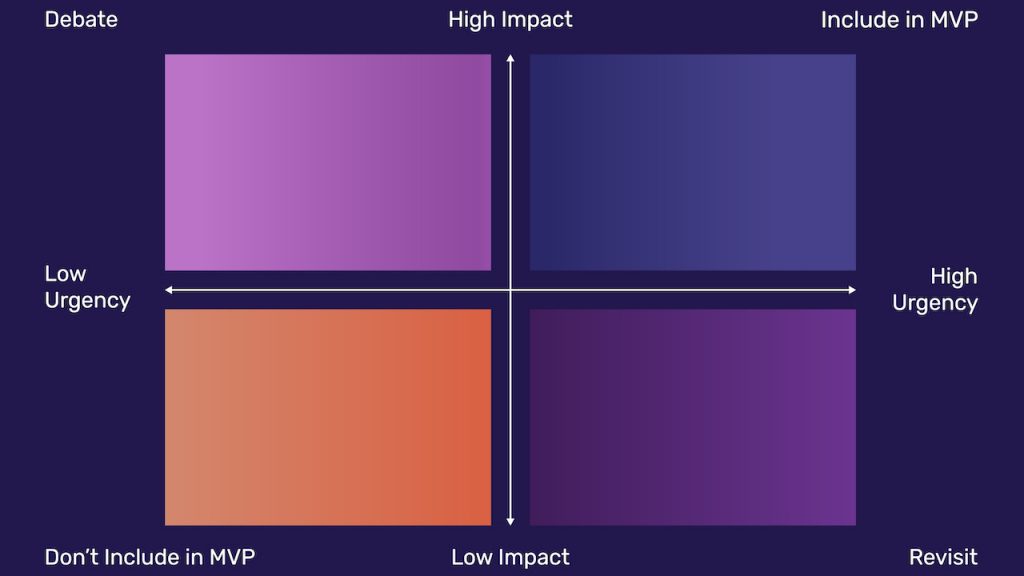How to Define Your MVP’s Core Features: A Step-by-Step Guide for Startups
In 2025, building an MVP looks very different from just a few years ago. Founders now have access to AI-assisted tools, rapid prototyping platforms,...
5 min read
Written by Keith Shields, Sep 6, 2025

Building a minimum viable product (MVP) is a proven strategy for SaaS startups and early-stage founders. It allows you to launch faster, minimize development costs, and gather real-user feedback that shapes the product’s evolution. While every product is different, creating an MVP app is one of the most effective ways to reduce risk and validate your idea early. In this guide, we’ll break down the pros and cons and help you decide how to approach your MVP with clarity.
A Minimum Viable Product (MVP) is the most streamlined version of an app that can deliver value to its target users. It's a functional product that users can interact with, without the full range of features in a final release.
When developing an MVP app, you can validate key business assumptions by building a solution to a problem and getting it out to the market as quickly as possible. From there, you gather direct user feedback and incorporate it back into the product. This build-measure-learn validation process provides invaluable insights to guide future development and helps you serve your customers more effectively, all while keeping lower up-front costs.
Every app idea should begin with an MVP version, a smart way to reduce the upfront risk and cost. However, to do this effectively, you need clarity around the app’s purpose, target users, and the core features that truly matter. A well-executed MVP helps you focus, learn, and adapt so that you can build the right product.
When you need clarity around the product’s purpose. What problem does your app solve? Why will users need it? Define the unique value your product offers before writing any code.
When identifying your ideal users. Who will benefit from your solution? What are their needs, desires, goals, thoughts, and feelings? Create user personas to gather insights from real users, validate your idea, and prioritize key features.
When it’s time to decide which features really matter to include in your app, avoid feature bloat, focus on solving core problems, one at a time, and prioritize features that deliver immediate value. This is the moment to determine what features need to be part of your MVP app.
Here’s a quick situational table to understand effectively when to build an MVP app:
|
Situation |
MVP Recommended |
Why |
|
Validating a new market |
Yes |
Low-cost market testing |
|
Expanding a proven product |
No |
Skip to pilot features |
|
Unsure about user needs |
Yes |
Early feedback is critical |
Use this MVP planning template to define your app's essential features to solve core user problems. A focused featured list will keep your product lean and purposeful.

Designli’s SolutionLab walks you through the process of defining your MVP, making sure you have fully vetted responses to these questions before we start building. A collaborative session that helps you validate ideas, prioritize features, and create an MVP with clarity.
Solution: You must recruit test users who match your ideal personas.
Solution: If your MVP includes too much or too little, you risk misinterpreting user interest. Use frameworks like MoSCoW or prioritization matrices.
Solution: MVPs need a solid architecture and a team that understands scalability from the beginning.
Solution: Plan for continuous feature evolution as user insights reveal priorities and improvements.
A lot of popular products, tools, and apps got their start as MVPs. You may not even recognize them now based on their initial release. Once they validated their core concept to address a consumer pain point, they collected user feedback and updated the apps based on their users’ needs.
Working with Designli: For Paidback, an app was created to help users connect with others and celebrate each milestone they have reached toward their personal goal. Our proprietary roadmapping session, the SolutionLab, took Amber’s napkin sketches to a fully fleshed-out product plan ready for technical execution.
Learn More: Paidback Study Case
There are numerous options for building an MVP. Choosing between custom code and vibe coding will shape your timeline and product potential.
Custom Code MPVs deliver total flexibility. Built with traditional programming, they are fully tailored to your specific features and user experience. This approach prioritizes deep customization, seamless integrations, and unlimited scalability, ensuring your product evolves exactly how you envision it.
Best for: Long-term growth, unique functionality, serious investor interest
Trade-off: Higher cost and longer time to market
Vibe coding uses minimal coding, making it ideal for rapid prototypes and quick feature testing. Its speed and simplicity are significant advantages in the early stages. However, it comes with limitations in customization and scalability, which can impact deeper user insights and long-term growth potential.
Best for: Rapid validation, non-technical founders, budget-conscious launches
Trade-off: Limited customization and scalability
Bottom line, vibe coding is excellent for early validation and showcasing basic features; however, it will increase limitations for startups with complex needs or long-term goals. Custom Code adapts perfectly for projects with scalability in mind.
By focusing only on must-have features, an MVP minimizes wasted development effort. Early user feedback ensures you build what your target audience actually wants, reducing costly rework and shortening time to market.
Yes. An MVP with validated demand, early adoption data, and a clear roadmap can be powerful proof for investors. It demonstrates that you’ve tested assumptions and are building from real insights, not just ideas.
MVP success metrics, such as user activation, retention rates, or engagement, measure how well your first version resonates. Product‑market fit is deeper: the app solves a compelling problem, evidenced by demand, word‑of‑mouth growth, and willingness to pay. An MVP helps you discover the gap between the two.
Developing an MVP App is all about building smart. For startup founders, it’s often the most straightforward path to market validation, product clarity, and investor confidence, and overall, it is a great way to reduce risk when creating a new app. Your first success begins when choosing the right problem, audience, and feature set.
If you are still contemplating creating an MVP app, consider this: the earlier you test, the faster you learn and get out to the market.
Designli’s Solution Lab helps SaaS and Startup founders cut through assumptions and launch products that resonate from day one. With a vast experience working on over one hundred projects, our team is ready to create a top-notch MVP.
Are you ready to create a successful MVP? Get in touch.
You might also like:
Subscribe to our newsletter.

In 2025, building an MVP looks very different from just a few years ago. Founders now have access to AI-assisted tools, rapid prototyping platforms,...

Launching a successful product is challenging, but it doesn't have to be a gamble. There is a way to test the waters, validate your idea, and gather...

The first steps in your product development process are essential. Build a minimum viable product (MVP) to validate your software idea and gather...
Post
Share